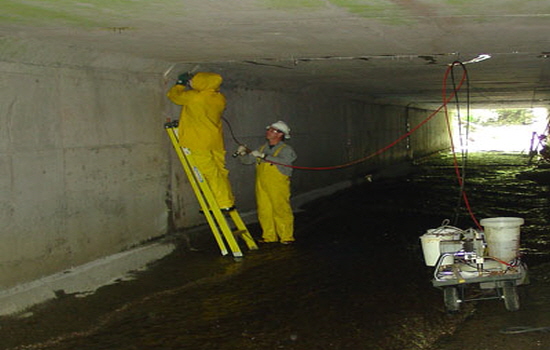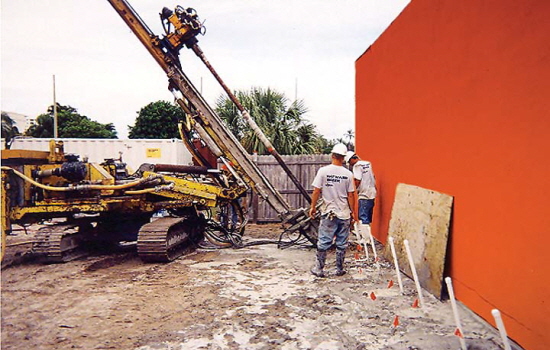보링그라우팅자료
본문
Boring Grouting Data
Cement Grouting |
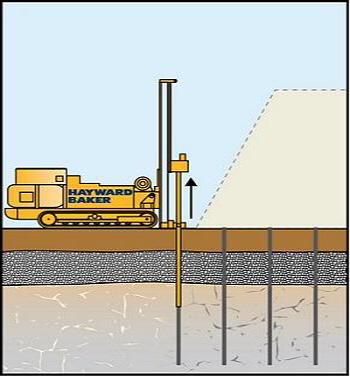
Cement grouting, also known as slurry grouting or high mobility grouting, is a grouting technique that fills pores in granular soil or voids in rock or soil, with flowable particulate grouts. Depending on the application, Portland cement or microfine cement grout is injected under pressure at strategic locations either through single port or multiple port pipes. The grout particle size and soil/rock void size must be properly matched to permit the cement grout to enter the pores or voids. The grouted mass has an increased strength and stiffness, and reduced permeability. The technique has been used to reduce water flow through rock formations beneath dams and to cement granular soils to underpin foundations or provide excavation support.
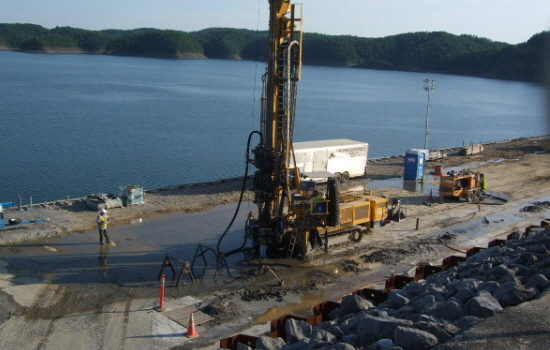
For underpinning applications, cement grouting may offer an economic advantage over conventional approaches such as removal and replacement, or piling, and can be accomplished where access is difficult and space is limited. Since the effectiveness of cement grouting is independent of structural connections, the technique is readily adaptable to existing foundations. Usually, cement grouting can be accomplished without disrupting normal facility operations.
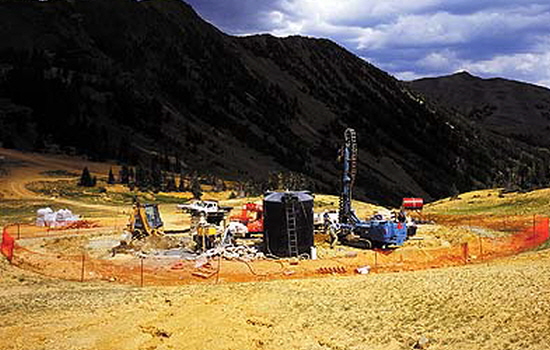
Hayward Baker has developed proprietary special equipment and software (iGroutTM), to allow real-time monitoring of all grouting parameters during the cement grouting process. The operator can adjust the real time cement grouting parameters, such as mix type, flow rate, pressure, and volume limits based on the real time acquisition of drilling and grouting data, while simultaneously monitoring for any movements or deflections of the ground or nearby structures. Data collected during drilling and grouting is recorded on a server which produces grouting reports as well as CAD profile drawings. Use of this advanced monitoring and control system increases accuracy and efficiency of the cement grouting.
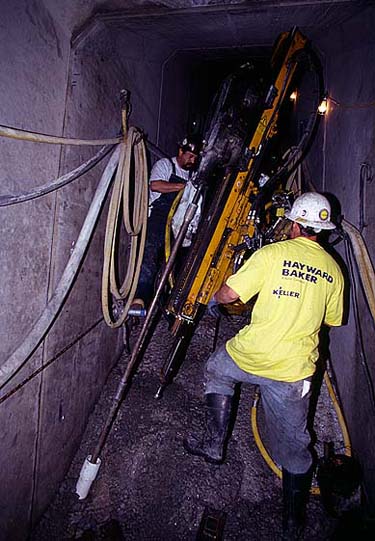
Chemical Grouting |
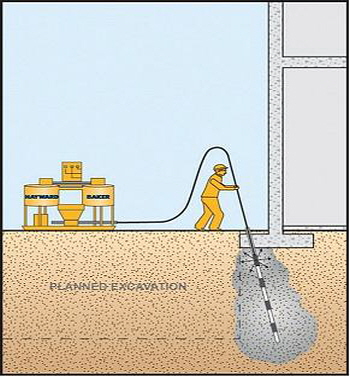
Chemical grouting is a grouting technique that transforms granular soils into sandstone-like masses, by permeation with a low viscosity grout. The soils best suited for this technique are sands with low fines content. Typically, a sleeve port pipe is first grouted into a predrilled hole. The grout is injected under pressure through the ports located along the length of the pipe. The grout permeates the soil and solidifies it into a sandstone-like mass. The grouted soil has increased strength and stiffness, and reduced permeability. Chemical grouting has been used to underpin existing foundations, create excavation support walls, create water cutoff walls and stabilize soils for tunneling.
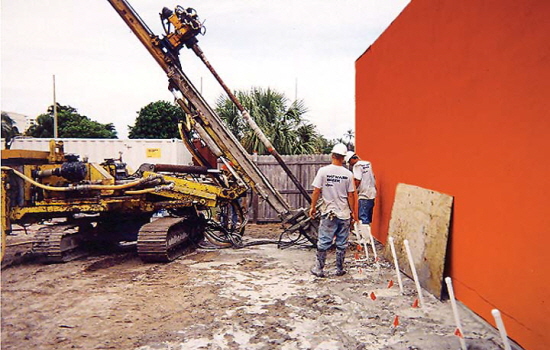
For underpinning applications, chemical grouting offers the advantages of being easily performed where access and space is limited, and of not requiring a structural connection to the foundation being underpinned. A common application of chemical grouting is to provide both excavation support and underpinning when an excavation is planned immediately adjacent to an existing structure. Usually, chemical grouting can be accomplished without disrupting normal facility operations.
Chemical grouting equipment is well-suited for tunneling applications in urban environments, whether for stabilizing soil around break-ins or break-outs, or for mitigating settlement of overlying structures within the influence of the tunnel alignment.
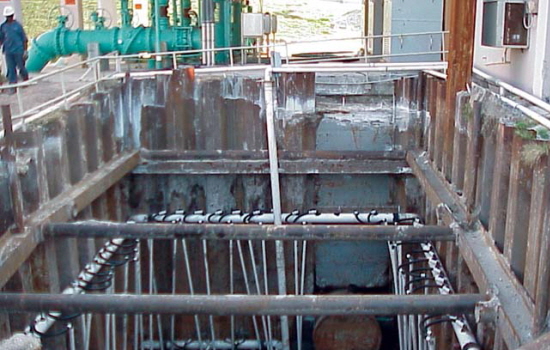
Hayward Baker has developed proprietary special equipment and software (iGroutTM) to allow real time monitoring of all grouting parameters during the chemical grouting process. The operator can monitor the real time chemical grouting parameters, such as mix type, flow rate, pressure, and volume based on the real time signals from data acquisition hardware (transducers/flow meters) while simultaneously monitoring for any movements or deflections of the ground or nearby structures. Data collected during grouting is recorded on a database server which produces a grouting log for each injection location. Use of this advanced monitoring and control system helps to increase accuracy and efficiency, and reduces risk.
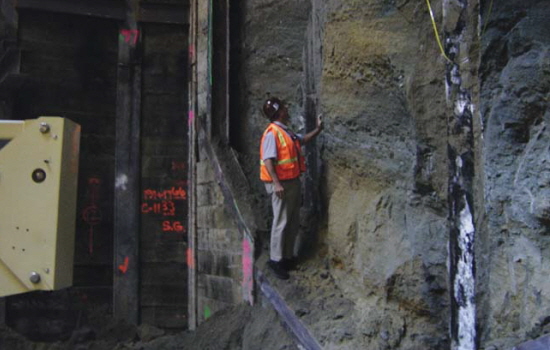
Compaction Grouting (Low Mobility) |
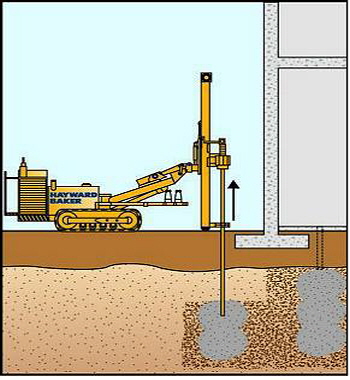
Compaction grouting, also known as Low Mobility Grouting, is a grouting technique that displaces and densifies loose granular soils, reinforces fine grained soils and stabilizes subsurface voids or sinkholes, by the staged injection of low-slump, low mobility aggregate grout. Typically, an injection pipe is first advanced to the maximum treatment depth. The low mobility grout is then injected as the pipe is slowly extracted in lifts, creating a column of overlapping grout bulbs. The expansion of the low mobility grout bulbs displaces surrounding soils. When performed in granular soil, compaction grouting increases the surrounding soils density, friction angle and stiffness. In all soils, the high modulus grout column reinforces the soils within the treatment zone. By sequencing the compaction grouting work from primary to secondary to tertiary locations, the densification process can be performed to achieve significant improvement. Compaction grouting has been used to increase bearing capacity, and decrease settlement and liquefaction potential for planned and existing structures. In karst geologies, compaction grouting has been used to treat existing sinkholes or to reduce the sinkhole potential in sinkhole prone areas.
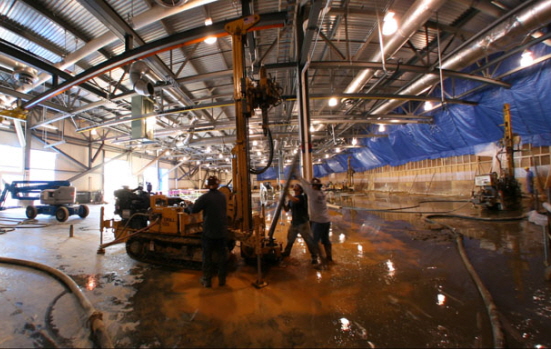
Compaction grouting was developed in the 1950s as a remedial measure for the correction of building settlement, and used almost exclusively for that purpose for many years. Over the past 25 years, however, compaction grouting technology has evolved to treat a wide range of subsurface conditions for new and remedial construction. These include rubble fills, poorly placed fills, loosened or collapsible soils, sinkhole sites, and liquefiable soils.
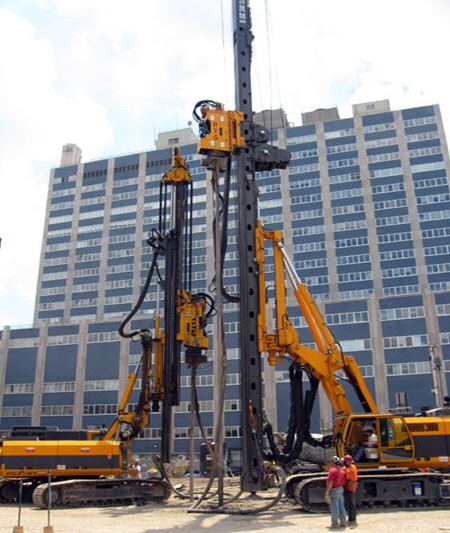
Compaction grouting offers an economic advantage over conventional approaches such as removal and replacement, or piling, and can be accomplished where access is difficult and space is limited. Compaction grouting for treatment beneath existing structures is often selected because the low mobility grout columns do not require structural connection to the foundations.
Hayward Baker’s compaction grouting capability spans more than 60 years and over 4,000 projects.
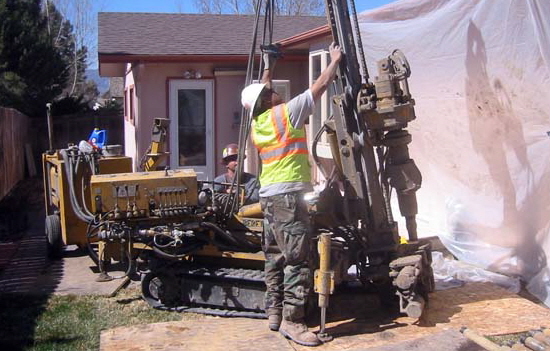
Jet Grouting |
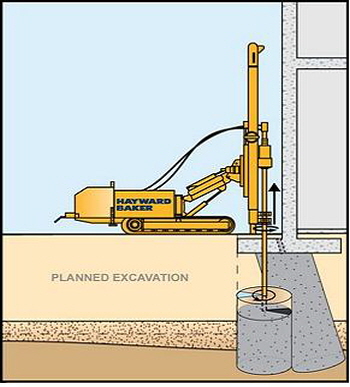
Jet grouting is a grouting technique that creates in situ geometries of soilcrete (grouted soil), using a grouting monitor attached to the end of a drill stem. The jet grout monitor is advanced to the maximum treatment depth, at which time high velocity grout jets (and sometimes water and air) are initiated from ports in the side of the monitor. The jets erode and mix the in situ soil as the drill stem and jet grout monitor are rotated and raised.
Depending on the application and soils to be treated, one of three variations is used: the single fluid system (slurry grout jet), the double fluid system (slurry grout jet surrounded by an air jet) and the triple fluid system (water jet surrounded by an air jet, with a lower grout jet). The jet grouting process constructs soilcrete panels, full columns or anything in between (partial columns) with designed strength and permeability. Jet grouting has been used to underpin existing foundations, construct excavation support walls, and construct slabs to seal the bottom of planned excavations.
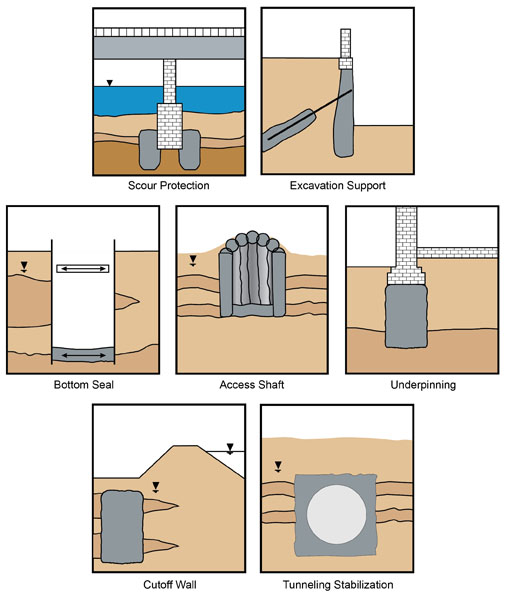
Jet grouting is effective across the widest range of soil types of any grouting system, including silts and most clays. Because it is an erosion-based system, soil erodibility plays a major role in predicting geometry, quality and production. Cohesionless soils are typically more erodible by jet grouting than cohesive soils. Since the geometry and physical properties of the soilcrete are engineered, the properties of the soilcrete are readily and accurately predictable.
Jet grouting’s ability to construct soilcrete in confined spaces and around subsurface obstructions such as utilities, provides a unique degree of design flexibility. Indeed, in any situation requiring control of groundwater or excavation of unstable soil (water-bearing or otherwise) jet grouting should be considered.
Usually, jet grouting can be accomplished without disrupting normal facility operations. The recent development of small containerized, highly mobile support equipment has enabled starting jet grouting work on the first day of setup, greatly reducing mobilization and demobilization costs. Jet grouting can often result in construction schedule savings.
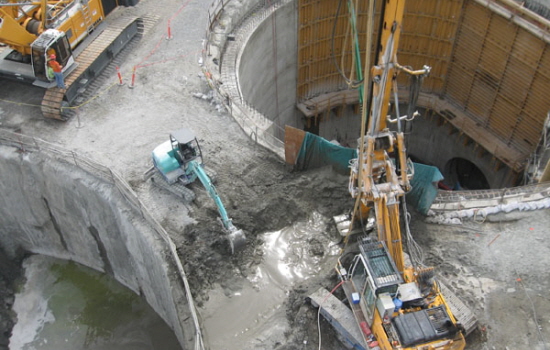
Hayward Baker is also strategically aligned with EOS Remediation, LLC and Chemical Grouting Co., Ltd. for the commercialization of the BioJetTM technology, a jet grouting system for environmental remediation in low-permeability (clays and silts) contaminated soil. One of the major benefits of the new technology is minimization of treatment time. Moreover, contaminant rebound, which has been a common issue with previous technical approaches, is eliminated.
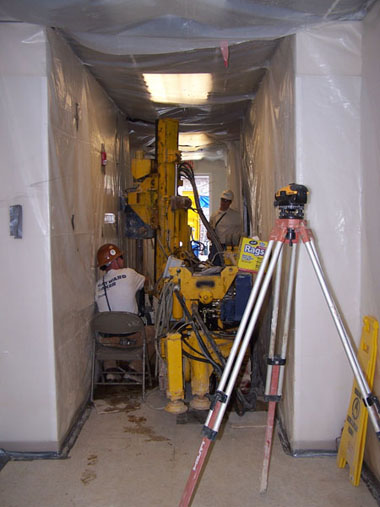
Fracture Grouting |
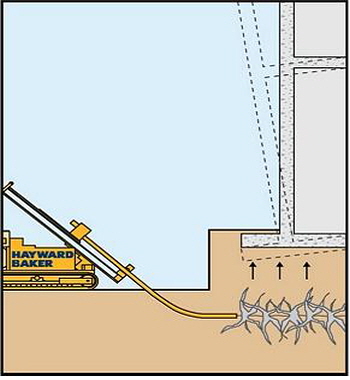
Fracture grouting, also known as compensation grouting, is a grouting technique that hydrofractures in situ soil, using neat fluid grout. A sleeve port pipe is grouted into a predrilled hole beneath a foundation. The grout is injected under pressure at strategic locations through the ports in the pipe. Once the hydrofracture pressure of the soil is exceeded, fractures open up in the soil and are immediately expanded by the subsequent influx of grout. The process results in controlled heave of the overlying soils and structures. The technique has been used to relevel structures or to protect structures from settlement while a tunnel machine passes below.
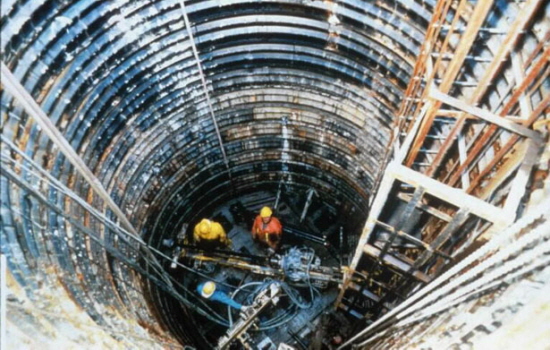
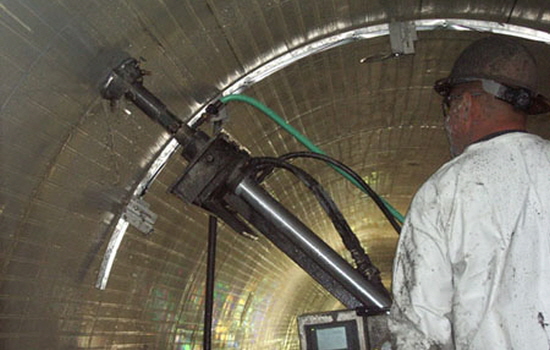
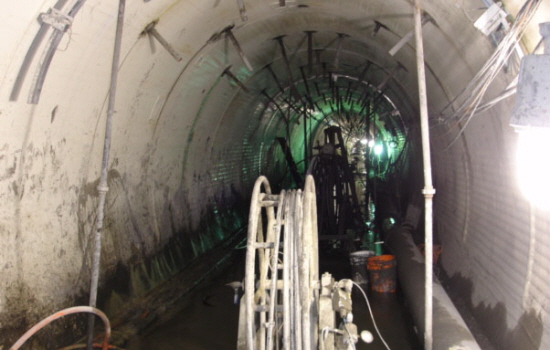
Polyurethane Grouting |
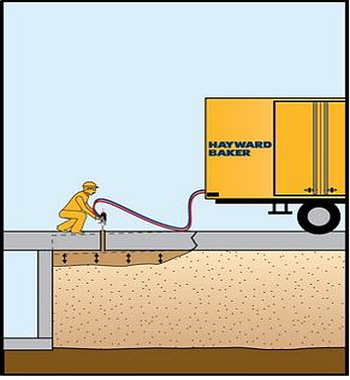
Polyurethane grouting is a grouting technique that involves the injection of expanding polyurethane to cutoff water flow through concrete joints or cracks or to fill voids beneath slabs or behind subsurface concrete walls or to relevel slabs. The grout is injected under low pressure through a predrilled hole. The grout then expands to fill the crack or void. Many polyurethane grout products are available with variations in viscosity, reaction time, reaction with water, expansion characteristic and flexibility of the reacted grout. Polyurethane grouts can be single or multi-component grouts and can react when coming in contact with water or require a reactant. It is important to select the proper grout for the specific application. The process fills voids either for water cutoff or structural support. The technique has been used to fill voids beneath slabs, relevel slabs, fill voids behind subsurface walls and seal leaking cracks and joints in subsurface structures such as manholes or tunnels.
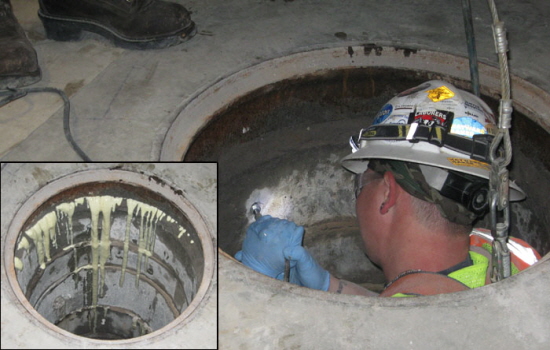
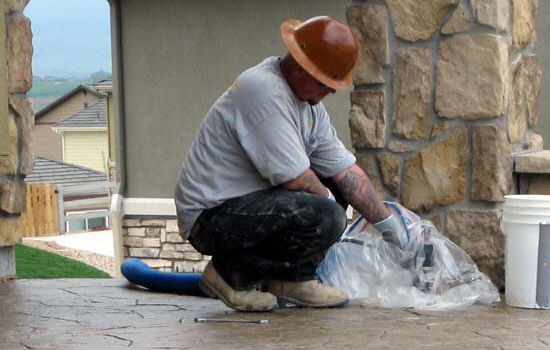
HB PolyLift® Polyurethane Injection is a releveling technique that raises concrete slabs and fills voids, using the regulated injection of lightweight, non-hazardous expanding polyurethane grout. When ground improvement is needed along with releveling, compaction grouting is performed for ground improvement and then polyurethane grout is injected to fill remaining voids and complete the lifting to final grade. Deeper loose zones are first densified with compaction grouting. Holes are then drilled through the concrete slab through which polyurethane foam is injected while monitoring the slab level from the surface. After re-leveling, the drill holes are cleaned and filled with cement grout. The treatment results in a densified subgrade, filled voids and a re-leveled and stabilized concrete slab.
